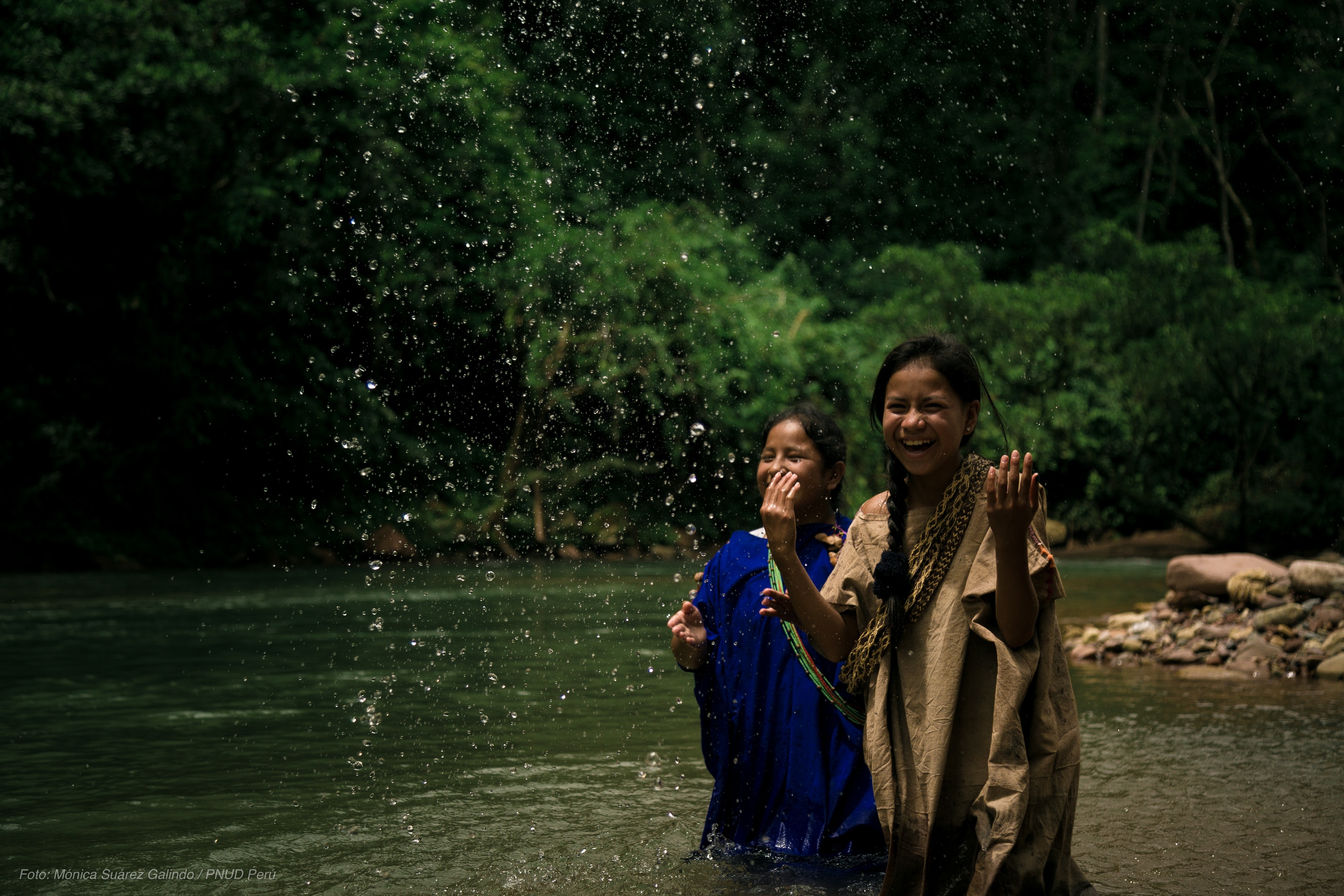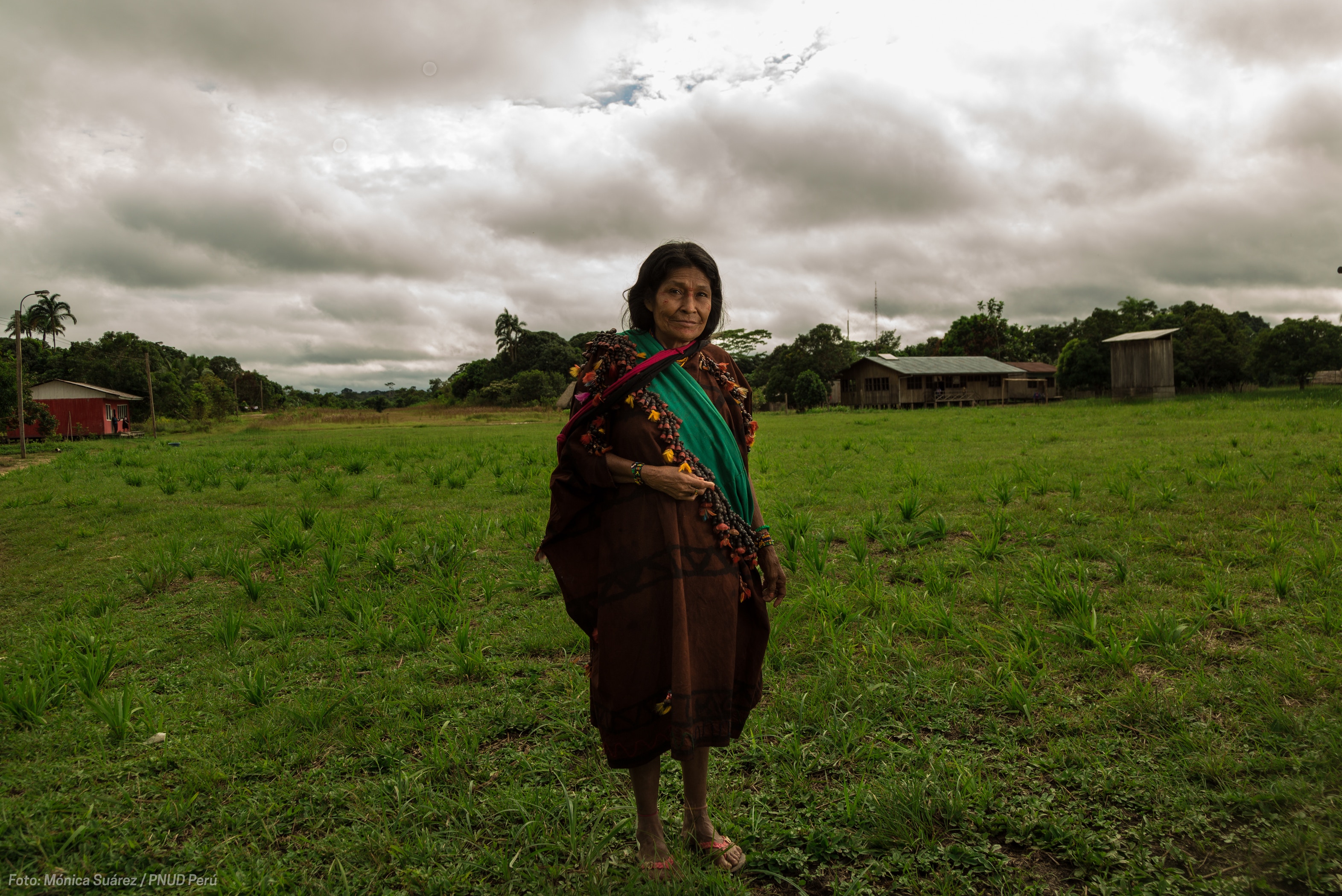An integrated response for indigenous populations in Peru in the face of COVID-19
To rethink the indigenous future in times of a pandemic
22 de Abril de 2020
Foto: Mónica Suårez Galindo / PNUD Perú
Inequality is an unfortunate constant that affects many indigenous communities in Peru and in the rest of Latin America. Even before coronavirus (COVID-19), most of them already lacked access to health care and other basic services like drinking water, those in the Amazon being the most vulnerable. This breach has become more visible during this pandemic that today demands a holistic response in order to not go back to the “old normal,” a state that already was a crisis for this and other vulnerable populations.
It’s been more than a month since it was confirmed that coronavirus had reached all Latin American countries, including Peru. Although at the beginning urban and semi urban areas were the most affected in this country, the risk that the virus would appear in indigenous communities was always there. Precisely, last week this risk became reality when the first two cases were confirmed in the shipibo-konibo village.
Even though communities throughout the Amazon have spearheaded the safeguarding of their territories, and the Peruvian government has implemented measures to protect them, many of these communities do not have the necessary equipment in their hospitals during this emergency, according to a declaration by the Interethnic Development Association of the Peruvian Rainforest (Asociación Interétnica de Desarrollo de la Selva Peruana, AIDESEP, in Spanish). On top of this, other outside threats persist, such as illegal mining, endangering these communities’ health.
Our work from the United Nations Development Programme (PNUD), throughout these past years in the Peruvian Amazon, has given us the opportunity to take a closer look at the needs and the potential of local responses to this global threat. This has allowed us to take joint action with the government and indigenous stakeholders, putting these communities as the focus of our response. More importantly, we’ve placed our efforts in helping those who are most vulnerable, like children, women and the elderly, protecting invaluable sources of wisdom.
In this joint response we’re putting to the test years of experience in collaborating with indigenous communities of the Amazon, as well as our existing alliances with local, regional, and national governments.
The preparation and response to this pandemic will determine the actions to be taken once we have to rebuild and recover. Thus, to prevent further transmission among these communities, preparation aided by knowledge will be key. Along this line of action, we’re supporting communication networks that will keep a steady flow of information to local and national decision makers and indigenous communities. Like these indigenous communities have rightfully declared, any and all communication to them has to be delivered in their own languages and with a gender-focused perspective. Only then will this intercultural communication be fully integrated and allow for their effective participation alongside different strategic sectors in the building of measures against the disease.
At the same time we’re prioritizing communities’ immediate access to social protection and healthcare. To achieve this, we’ll support the Peruvian government in improving their systems of information and geolocation to analyze vulnerabilities, and with it, their ability to make better decisions on where and how to treat the disease’s spread. We will also boost articulation between indigenous communities and the government in joint contingency plans for quick response, even in the most isolated areas.
As soon as this pandemic is over we will push for public policy benefiting the recovery of indigenous communities. These policies will promote innovation in the financial inclusion of these populations in the economy, especially of women who are not financially independent, focusing on livelihoods without deforestation and food insecurity. In this way, sustainability will be the priority, always relying on data and backed up by evidence.
Without a doubt, this emergency has given us a unique opportunity to build a new “normal,” focused on sustainability. UNDP will continue to work on this sustainable future, one that guarantees the survival and the autonomy of indigenous communities and accelerates their progress toward the Sustainable Development Goals. A future with productivity for prosperity, with resilience in harmony with the environment, and with effective participation so indigenous communities, exercising their fundamental and collective rights, are never left behind again.

 Locations
Locations






